Behind the scenes of Death & the Rosa Theatre
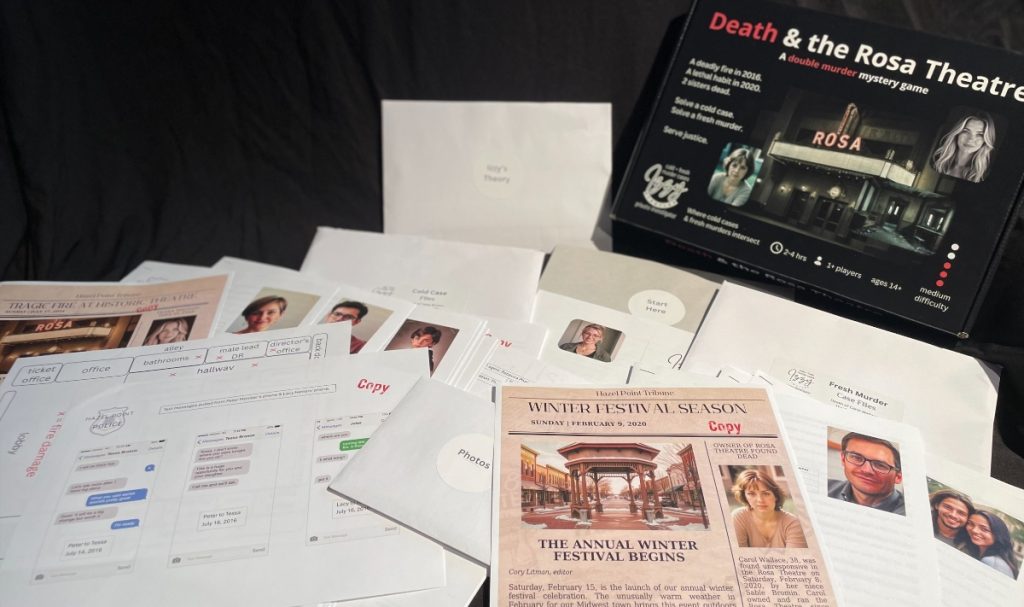
This game was created by a human.
The plot, characters, writing, design, editing, logos, documents, box design — all created using imagination from a mammal. Okay, that was a strange way to say AI didn’t write this game. The only thing AI did was create the photos of locations and people. More on that later.
It’s always interesting to peel back and reveal how something changed over time. At least for me it is. At the very least, it’s a learning takeaway and reiterates that a first draft should almost never be considered a final draft. It has to evolve.
Here are 12 decisions I had to make to Death & the Rosa Theatre as it was being created.
1. Izzy’s last name
Originally, Izzy Stratler was Izzy Andrews. But after an online search, I found a few in real life. I struggled to find a last name that worked until I thought of Stratler. Izzy Stratler was born.
I did not search the other character names. There is the disclosure for this — not based on real people. It’s important for Izzy to be unique because to keep her story alive, I will expand on her character, and she will be in other games.
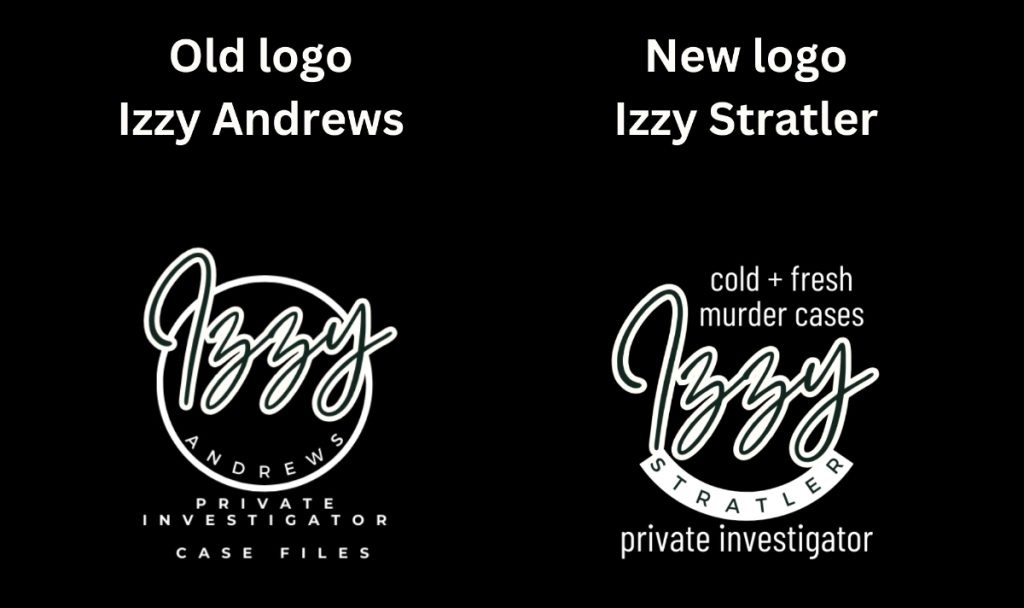
2. Hand-written letters & signatures
I have a touch screen laptop, so all signatures and hand-written letters are written by my finger on the screen.
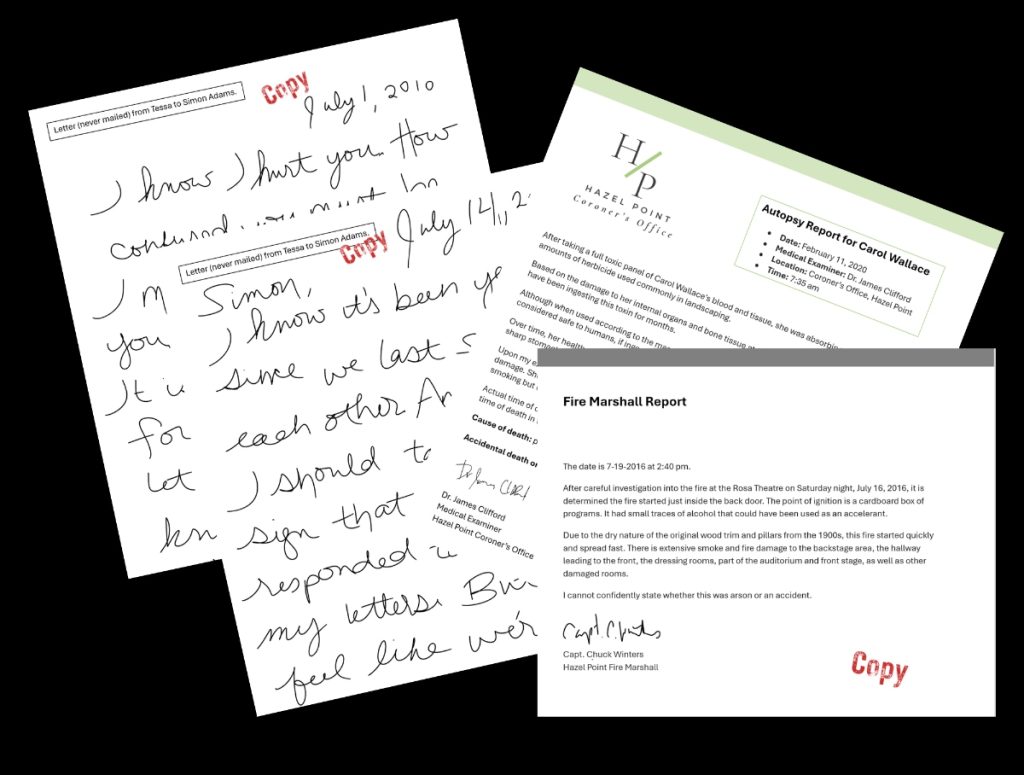
3. Photos & sketches
The photos and sketches are the only things that were AI generated. I subscribe to a reputable stock photo company with an AI image service. I put in a prompt with the description of the characters I wanted and selected the images.
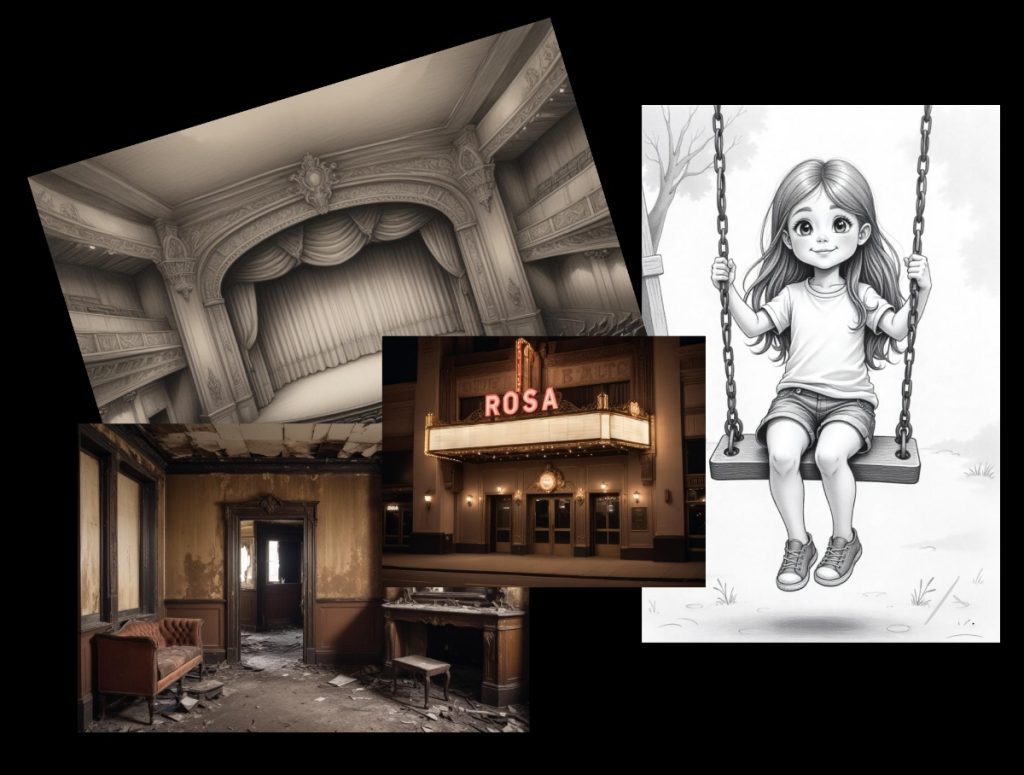
4. Creation challenges
What’s interesting is originally the theatre was named the Rosalyn Theatre. But when trying to generate the the photo image of the front of the theatre, I learned AI isn’t good with letters. It constantly misspelled “Rosalyn” in weird ways. But it was able to spell “Rosa” so it became the Rosa Theatre.
Other things were tricky with the AI images. I couldn’t take an image of a person and make them look older. I had to use a new prompt and hope it generated a similar photo. AI also likes to add random people, or arms, and even fingers into its photos…
Spoiler alert: If you look at Carol close enough, you’ll see her younger version and older version are similar, but aren’t the same person.
5. Authenticity
I wanted the interviews to appear as real as possible. I used to be a legal transcriptionist for police recordings, lawyers, child psychologists — you get the point. In the interviews, depending on the type of recording, they typically use a few minutes to acknowledge the location, time, birthdate of the person being interviewed, etc. That, paired with wanting to really tell the story through the interviews, made the interviews too long — some were 8 pages!
When I had game testers for the first draft of the game, it was too much reading. And the cost to print was too high. So, I cut them down. The longest interviews are 4 pages. Double-sided printing cuts down on cost and is more environmentally friendly. (The paper I use is made from recycled paper and the boxes as well. They are also all recyclable.)
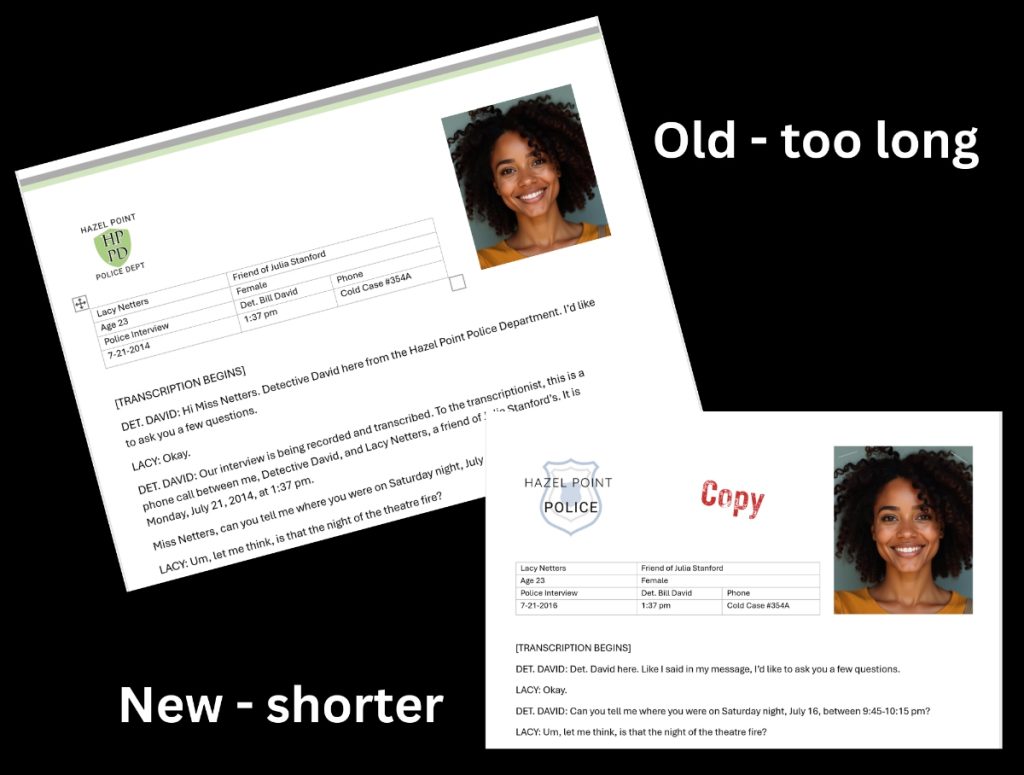
6. Attaching photos to the interviews
I wanted a realistic way to “attach” the photos to the interviews. At first I used a paperclip design, but in order to print it, the bleed would need to go all the way to the edge, which isn’t always offered in an online printing service.
At the time, I considered printing these myself, but my computer wouldn’t print without a white border and it didn’t look as professional. So, I played around with a few designs and settled on what looks like staples. Not all of the photos have the staples perfectly lined up like below because that’s not realistic.
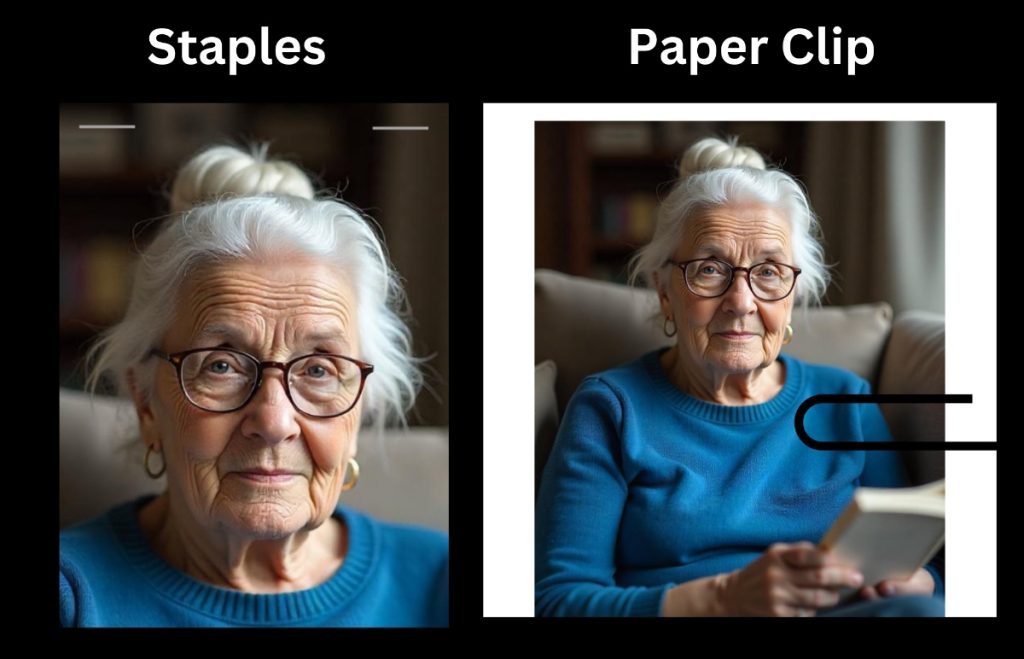
7. Who killed Tessa? At first, I didn’t know.
Now I do know, but I’m not going to reveal that! But it’s true, I didn’t know for the first round when I had two people play the first draft of the game. I felt it could have been a few of the characters. Once I made a decision, I made adjustments to the story, which took it in a slightly different direction.
8. Professional evidence with zero budget
With no budget to work with, I needed a way to create evidence and clues that looked professional. Other games I’ve played use trinkets like a button/pin. Those were cool but didn’t add value to the game, and no doubt costs more to create.
The challenge was to find a way to have the evidence look legit while making it as inexpensive as possible, but still gave the player value for their money. I don’t have a fancy website for players to seek the solution or find clues online. But I have Izzy Stratler.
Her story explains why things are “copies”. For example, I don’t have an entire newspaper that gives clues. But I have a copy of two articles that provide value and fit into the scope of Izzy’s explanation.
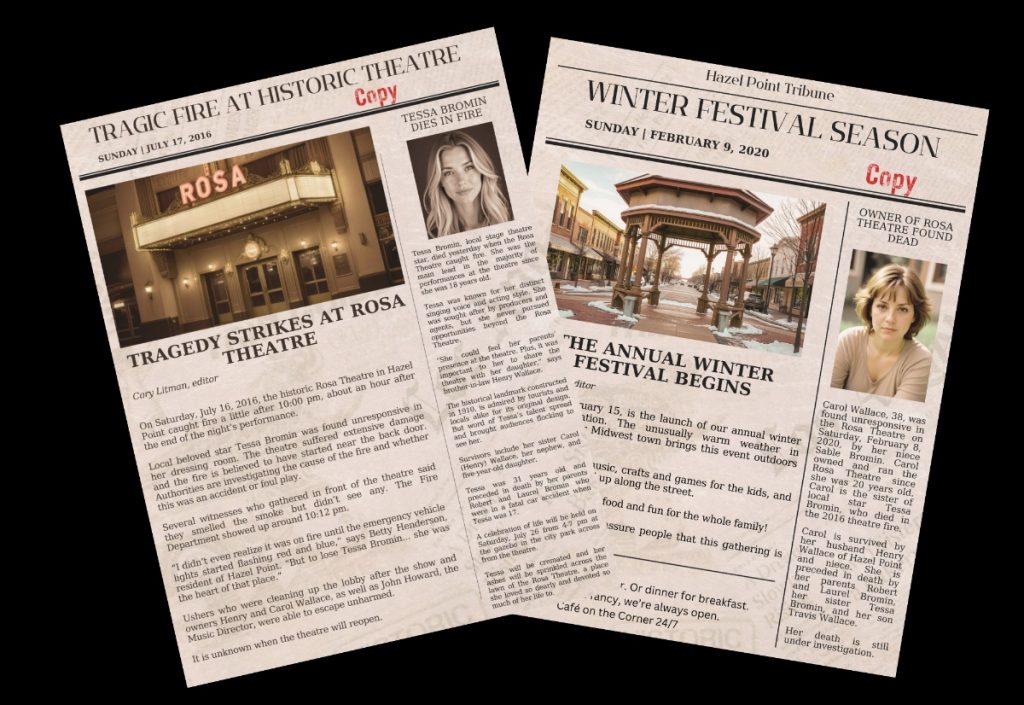
I used Canva. And Microsoft Word. And the image subscription. I made lots of mistakes, but learned so much. I have created a better process to use for my next game creation.
9. HPPD logo
I changed the Hazel Point Police Department logo because the first one didn’t look professional when printed.
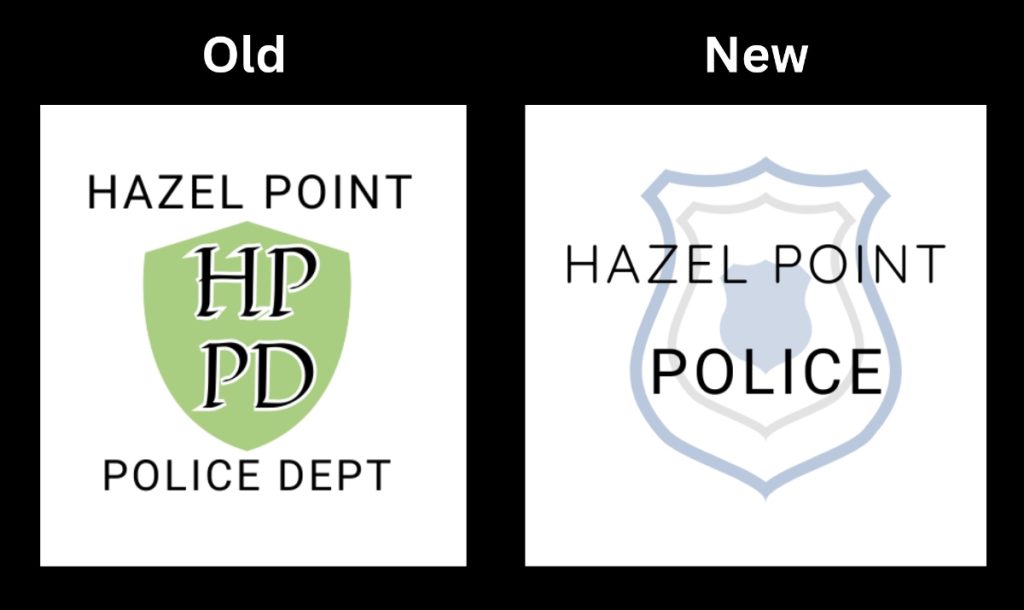
10. The playbill
This is the playbill to the show on the night of the Tessa’s death. At first, the whole front and back of the program was colored. Because of that, I would have needed to send it to a printer. In order to keep costs down, I bought colored paper and changed the program to have a transparent background. Now, I can print it at home.
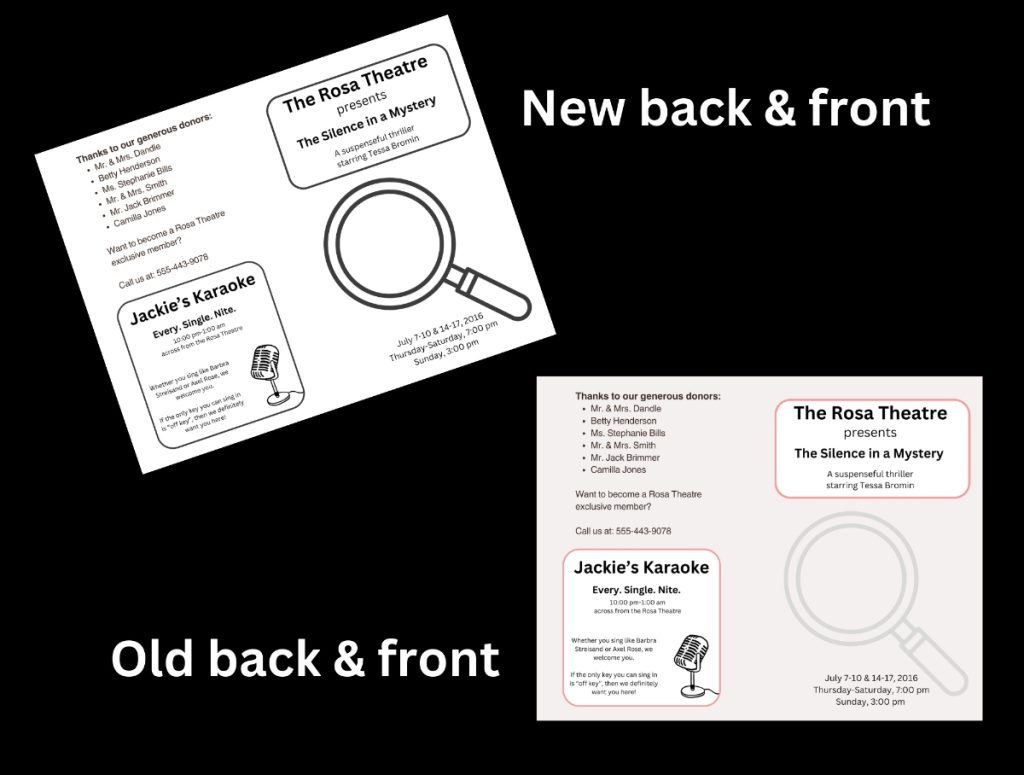
11. The box design
I wanted an eerie and intriguing box. Using a box is more expensive, but it is part of the branding for future games and makes the game look more professional.
I researched companies online and received a quote from a local printer. This is when I realized just how much it would cost to have all of these items printed. But aside from the Amazon store and fees for that, and advertising, printing and supplies are my only expenses.
The box is designed. I have samples I purchased to see the quality of the boxes. The first draft was with a matte finish. The second was with a gloss finish for more durability; however, I found the gloss made the images and some colored text look blurry, so I opted for the matte finish instead.
12. Game testers
I had 5 people test out the game in various stages. Their feedback was so insightful. It helped me see gaps in my story or character motivations. This game wouldn’t be where it is now without them. Because of their comments, I added valuable evidence, characters, and adjusted plots.
Learning the challenges they faced in playing the game and what details they latched onto — and didn’t — was crucial. We never know how something we create will be perceived in the world, so having this feedback helped me adjust, make some things more clear, and generally a stronger game.
I may add to this as the list of things I learn and times I have to pivot are often. But it’s a great reminder that especially in creative works, things are never set in stone. There is always room to improve and build.
